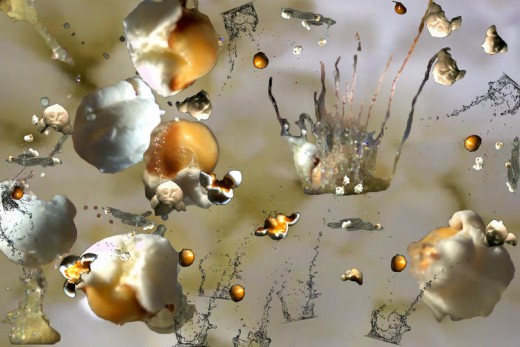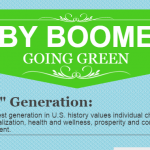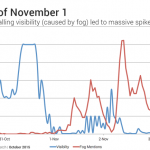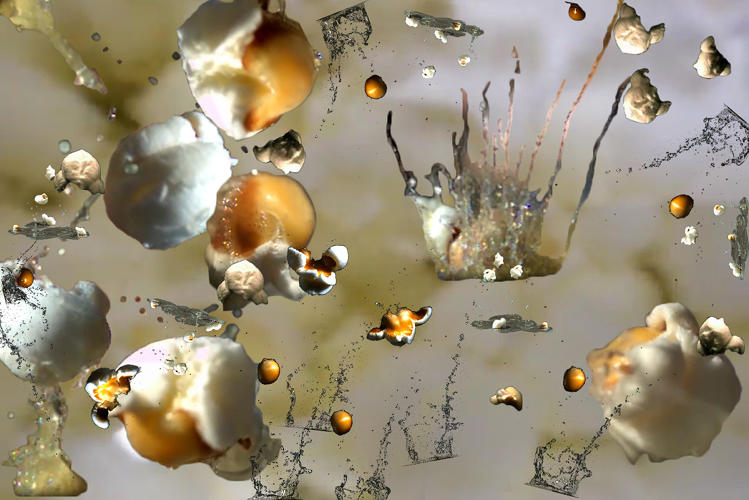Our bodies, Our Machines: throughout the “New Intimacy” Of The Digital Age
internet porn, techno-lust, and computer-powered intercourse are explored in new media artist religion Holland’s show off, Technophilia.
June 29, 2015
Ethernet cords glisten, as if lubricated with Astroglide. Anonymously volunteered semen shots become hyper-coloured collages. A series of ceaselessly looping GIFs satirize Hollywood’s try to edit collectively visible metaphors for male ejaculation during the closely censored years between the Nineteen Thirties and Sixties.
Human sexuality in the digital age is on full-frontal display in new-media artist religion Holland’s Technophilia, her first solo exhibition, up now at switch Gallery in Brooklyn, the big apple.

while Holland wonders if our expertise—the screens and constant connectivity—warp lust and sexual want, she’s very much aware that erotic imagery and media distortion usually are not a brand new phenomenon. As Holland notes, as long ago as the primary cave art work and early sculptural totems, thru lithography and ukiyo (jap woodblock prints), sexuality has been a dominant a part of the photographs we create. Technophilia posits that even after the bodies, be they sexual companions or porn stars, vanish onscreen, there is a residue of lust left on the software itself.
The initial pondering for Technophilia began with a video Holland made in 2011 known as RIP Geocities. The video starts offevolved innocently sufficient with the question: “What does the internet look like in the well-liked creativeness?” however as Holland commenced research that took her from the Wachowski’s plugged-in film, The Matrix to Udo Bass’s cybererotic exploitation flick Sexual Matrix, her perception of the net commenced to shift.
positive, RIP Geocities answered Holland’s preliminary query in its speedy, tunneling navigation of cyberspace. but Holland wanted to burrow deeper into “the subtext of these tunnels—a vaginal subtext.” This led her to create VVVVVVV, an “summary pornographic website that reframes these tunneling representations of the all over the world internet as cyberpussies.”
while techno-lust for sure exists, it’s onerous to say how a lot web pornography involves the machine as object on this matrix of lust. but Holland factors to a line in Zabet Patterson’s essay “happening-line: ingesting Pornography within the Digital Age” for conceptual firepower:
Pornography is currently popular on the net now not just because it allows the short and straightforward distribution and personal consumption of erotic images, but because the affective cost attached to new and forever renewed pc technology.
Holland believes that it isn’t just the content of on-line pornography that pulls an target market, however the kinds and platforms on which it seems, too: smart phones, pills, digital fact headsets, and smart watches.
“[Patterson] wrote that essay over 10 years ago, but if we consider phenomena like Google Glass or Oculus Rift porn, this idea continues to be just as related,” Holland says. “sex hasn’t modified so much if in any respect, however our quite a lot of factors of get entry to to it have changed dramatically along with new technologies.”
Holland characterizes this building as a “new intimacy” of the 21st century. An intimacy that exists between user and machine (or software), mirroring our historically physical relationships, whether romantic or simply sexual.
“Why can we get upset when our phones wreck or our web is down?” Holland mused over e-mail. “perhaps it’s partially because we have to shell out more cash or we’re bored and don’t in an instant think to pick out up a book, but i feel a big part of it’s that we change into cut off from these vast networks of people that social media has brought into our homes and just about our our bodies.”

With the visible Orgasms series, which is a component of the Technophilia exhibition, Holland loops transferring pictures to “playfully” expose “visually consumable sex.” Holland says that this series was once impressed with the aid of a odd bedfellow: Hollywood’s movement image production Code. often referred to as the Hays Code for the person who created it, this set of censorship ideas used to be designed to scrub any whiff of pornographic content material from movies filmed between approximately 1930 and the Sixties.
regardless of this kind of censorship, as Holland noted, Hollywood studios still found themselves endeavoring to depict this forbidden sex.
“for example, when a couple gets married and crosses the edge of their new home, a film may reduce to a couple metaphor as a stand in such as a teach going via a tunnel, champagne popping, a rocket going off,” Holland says. “Pornography has a similar downside: it wants to visualize orgasm so as to show the veracity of (male) pleasure depicted within the scene and does so by way of externalizing ejaculation.”
all the visible Orgasms works are composed of discovered supplies. Some have been firstly GIFs when Holland discovered them, but extra regularly than not she pulls videos and makes them into GIFs. Holland then edits each particular person part frame-with the aid of-body—every one is about 10-20 frames—before growing the primary composition out of a collage of the images. as soon as organized, she re-animates every frame of each part within the principle composition.
“It’s a type of tedious way, nevertheless it permits me to control how each frame of the final GIF seems to be,” Holland stated. “In one of the GIFs, like Rockets, the action happens in unison, whereas in others like Popcorn, the action cascades so the weather are doing one thing different in each and every frame.”
For the collection of semen shot works, inspired by using her partner’s eagerness to make contributions, Holland introduced an internet call for submissions. All told, she received between 50 and 60 samples through email and an nameless drop field she arrange. She remains to be receiving submissions.
The work It wants You is composed of Ethernet wall plates and wires. “The 60 wall plates had been installed on a crimson plexiglass piece in a tight grid,” Holland says. “each port is then plugged in with a wire. There are a hundred and twenty cords in complete that drop down onto every other plexi piece. The last, and most fun phase, is coating the wires with lubricant that makes them glisten.”

The works present in Technophilia, Holland says, are about growing a space for important pause within the moments where we all too steadily consume media at high velocity with minimal thought. It additionally “crystallizes pleasures” we experience unconsciously: our relationships with our units.
Holland is a long way from alone in wondering in regards to the impression technology has on our collective humanity. From camps to campaigns, there is an active unplugging movement afoot, and shows like Black reflect do a lot to light up a close to future—or a present, even—the place our technology leads us down dark paths.
Like Holland, media artist Alexandra Gorczynski has explored pornography within the digital age with her “electric hearth” video.
And Thomas Pynchon latched onto this idea in his 2013 novel Bleeding part. The title, a reference to unsafe, experimental know-how, would possibly as smartly be a distillation of the digital age. New technologies—within the guide, a deep net-primarily based digital reality world—are unleashed prior to any person really knows how they are going to impact humanity. Alex Garland’s so much-mentioned Ex Machina additionally pursues this line of thought. in the film, a billionaire creates sturdy artificial intelligence sooner than realizing how it’s going to ultimately have interaction with humans.
Bitforms Gallery curator Chris Romero believes that Holland separates herself from the net art crowd via thinking of units and technologies as “sculptural objects” charged with a certain more or less power. For Romero, the internet is a “limitless” pool of intimacy,” which produces an unconscious lust for our screens and devices. The residue of lust, as Romero tells quick company, can also be many things, from a pc that conceals and shares intimacy, to a transfer of this deposit from an previous computer to a new software.

For her section, Holland is occupied with one a part of the human expertise in the digital epoch.
“i am seeking to have in mind a particular side of this ubiquity,” she says, “which is the sexual relationship that’s formed with these objects.”
Technophilia runs except July eleven at switch Gallery.








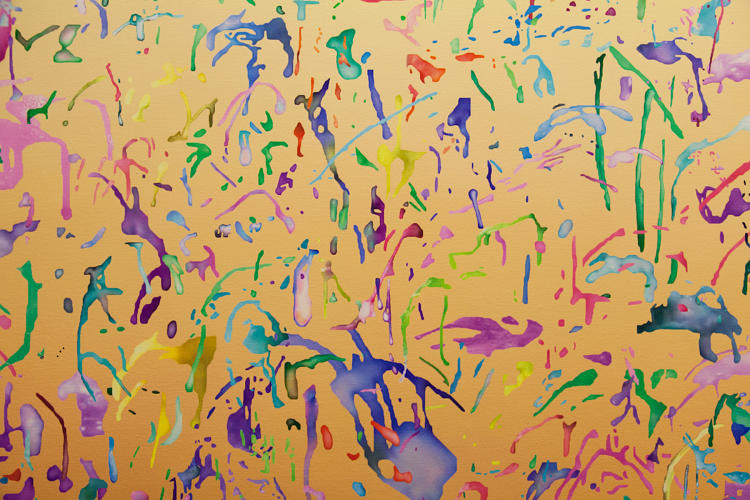







quick company , learn Full Story
(143)

